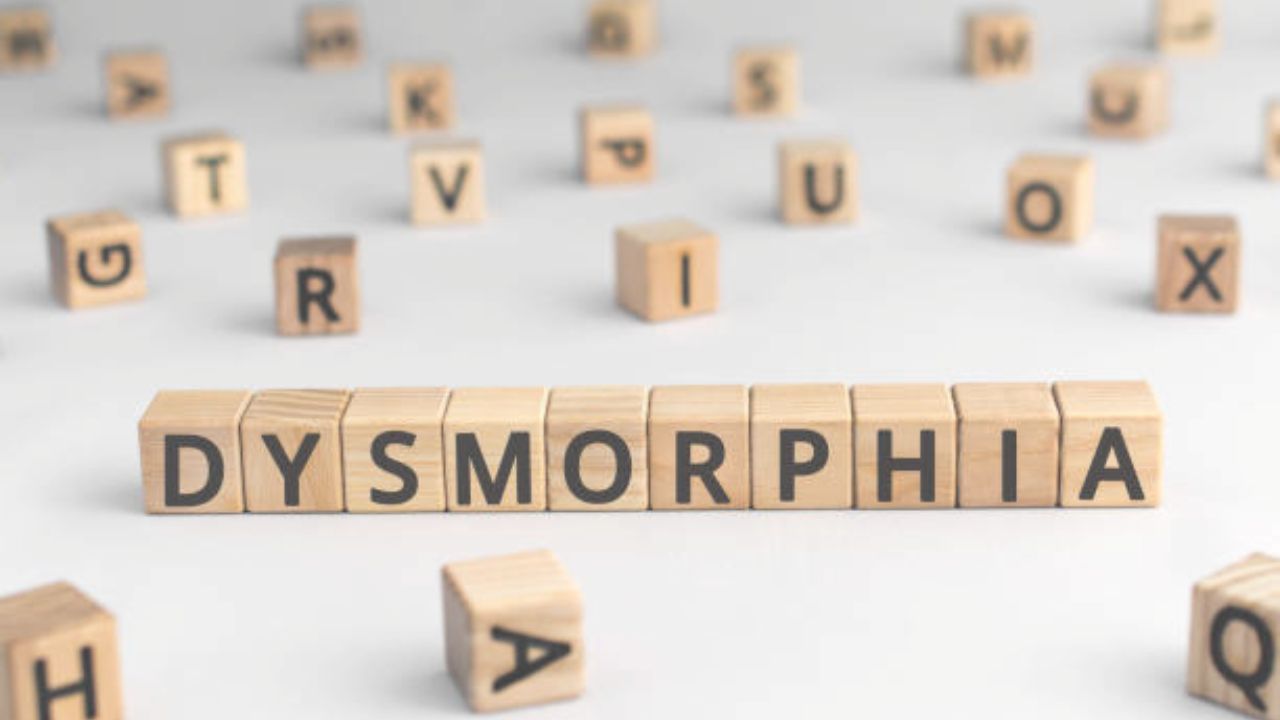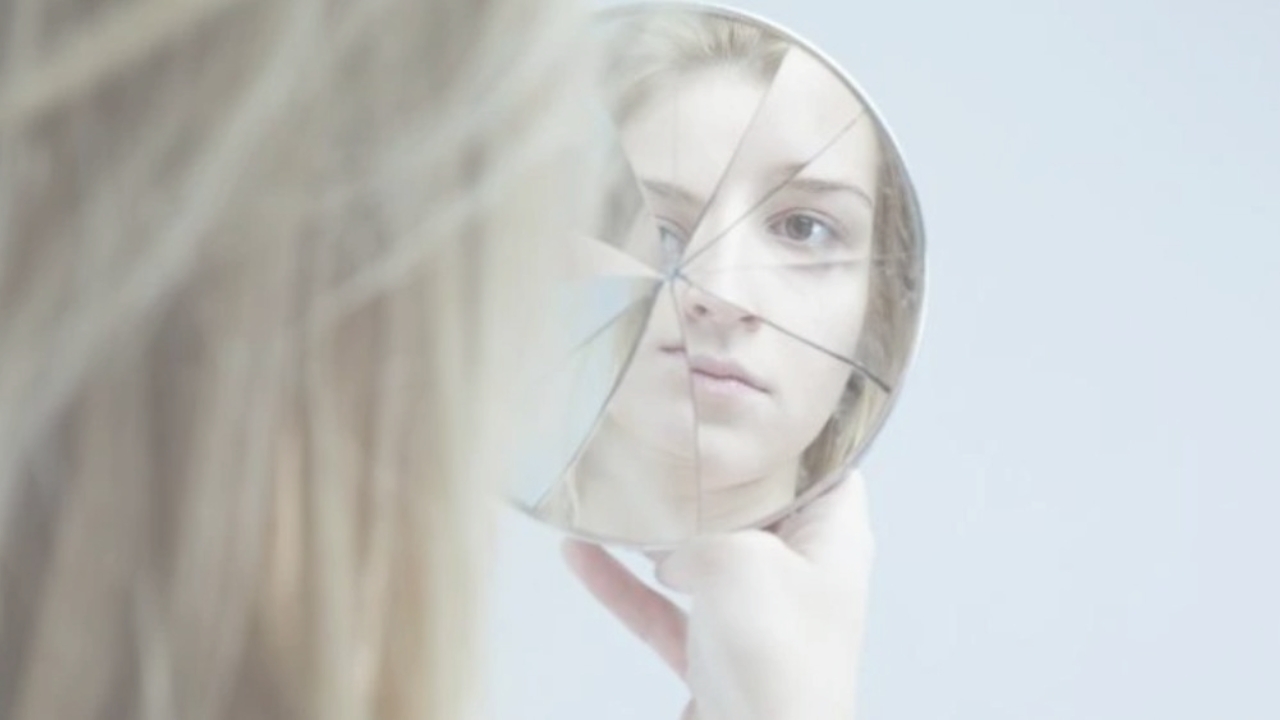Dysmorphophobia (body dysmorphic disorder) is a serious mental disorder. Those affected feel ugly or even disfigured, although objectively they are not. They worry too much about their appearance. The disorder is a significant burden for those affected, who often withdraw from social life. Read more about dysmorphophobia here.
ICD codes for dysmorphophobia: F22 | F45
Quick overview
- Symptoms: Constant mental preoccupation with the perceived physical deficiency, changes in behavior, psychological strain.
- Causes and risk factors: psychosocial and biological factors, childhood experiences, risk factors are abuse, neglect, bullying; disturbed brain chemistry (serotonin metabolism) is assumed.
- Diagnosis: Psychological test questionnaire, exclusion of possible actual disfiguring diseases.
- Treatment: cognitive behavioral therapy, drug treatment with antidepressants (selective serotonin reuptake inhibitors).
- Prognosis: If left untreated, the body dysmorphic disorder often develops chronically to the point of delusions; high risk of suicidal tendencies; therapies are showing good results.
What is dysmorphophobia?
People with dysmorphophobia, also known as body dysmorphic disorder, are constantly concerned about their appearance. Affected people feel disfigured, although there is no objective reason for it. Even if a part of the body does not actually correspond to the current ideal of beauty, those affected perceive this to be much worse than it really is.
The reason for the shifted view of reality is a body image disorder. Most of the time, they fixate on a specific part of the body that seems unaesthetic to them. Women often complain about their face, chest, legs, or hips, while men feel disfigured primarily because they have too few muscles, unsightly genitals, or too much body hair.
Dysmorphophobia has far-reaching consequences for social and professional life. Those affected withdraw from friends and family because they are ashamed of their appearance. They neglect their work. More than half of those affected have suicidal thoughts. Thus, there is also an increased risk of suicide with dysmorphophobia.
Body dysmorphic disorder (BDD) is one of the obsessive- compulsive spectrum disorders in the American Psychiatric Society’s Diagnostic and Statistical Manual of Mental Disorders (DSM-5). Because people with dysmorphophobia exhibit behaviors similar to those with obsessive-compulsive disorder.
In the “International Statistical Classification of Diseases and Related Health Problems” (ICD-10) of the World Health Organization, non-delusional dysmorphophobia is one of the “somatoform disorders” as a variant of hypochondria. If delusional thinking and behavior are added, they are counted among the “delusional disorders“.
How many are affected by dysmorphophobia?
There are no exact figures on the frequency, estimates generally assume that around 0.5 to two percent of those affected suffer from dysmorphophobia. Women are affected more often than men. In many cases, the disorder begins in adolescence. In addition to the distorted body image, at least half of those affected also suffer from depressive symptoms. Social phobia and obsessive-compulsive disorder also often coexist.
Muscular dysmorphia, muscle dysmorphic disorder
A specific variant of dysmorphophobia is muscular dysmorphia or “muscle dysmorphic disorder“, which predominantly affects males. They feel their body is not muscular enough or they feel too small. Even if their body already resembles that of a professional athlete, they dislike it. As a result, some people begin to exercise excessively. Muscle addiction is also known as the Adonis complex or reverse anorexia.
Similar to an anorexic person, men perceive their bodies as distorted. However, instead of avoiding calories, they focus on eating protein-rich foods. In desperation, some resort to anabolic steroids in order to build up as much muscle mass as quickly as possible.
How many people are affected by muscular dysmorphia is unclear. Among bodybuilders it is estimated to be about ten percent. Experts assume that the number of people affected will continue to increase. The reason is that men are now also under the pressure of a beauty ideal.
Symptoms of body dysmorphic disorder

People with body dysmorphic disorder are constantly dealing with their flaws. Sufferers have no control over their self-deprecating thoughts, which significantly impair their quality of life. People with dysmorphophobia tend to engage in so-called security behaviors, which are also typical of compulsions. Some have to keep checking their perceived flaws in the mirror, even though it makes them feel bad.
Others shy away from looking in the mirror and no longer dare to go out in public. As a rule, people with dysmorphophobia try to hide their imagined blemishes. Some have regular cosmetic surgery treatments or try to change their appearance themselves. But none of this solves the problem – they continue to be ashamed of their appearance. Depressive symptoms such as despondency and hopelessness often accompany dysmorphophobia.
According to the “Diagnostic and Statistical Manual of Mental Disorders” (DSM-5), the following symptoms must apply for the diagnosis of dysmorphophobia:
- Those affected are excessively concerned with supposed beauty defects that are not recognizable or only minor to others.
- The supposed blemish drives those affected repeatedly to certain behavior or mental actions. They constantly check their appearance in the mirror, practice excessive personal hygiene, let others confirm that they are not ugly (reinsurance behavior), or compare themselves to other people.
- Those affected suffer from preoccupation with their appearance and it affects them in social, professional or other important areas of life.
- Preoccupation with appearance is not based on an eating disorder.
Dysmorphophobia occurs in some cases in combination with delusions. The person concerned is then completely sure that their perception of their own body corresponds to reality. Other sufferers, on the other hand, are aware that their self-perception does not correspond to reality.
Causes and risk factors
Experts suspect the cause of dysmorphophobia to be the interaction of biological and psychosocial factors. The values conveyed in society also have an important influence. Beauty has a high priority. The media amplifies the importance of looks by giving the impression that beauty brings happiness.
In the case of body dysmorphic disorder, physicians speak of a “disorder of the intrapsychic body representation“, the perceived body image does not correspond to the objective body image.
Psychosocial factors
There is evidence that childhood experiences play a crucial role. Experiences of abuse and neglect in childhood are risk factors for the development of dysmorphophobia. Children who are overprotected and whose parents avoid conflict are also at risk.
People with body dysmorphic disorder have attached great importance to their appearance since childhood. They often receive affection from their parents because of their looks and not because of their personality. Appearance thus becomes a source of validation and recognition.
Teasing and bullying, which severely damage self-esteem, in some cases contribute to the fact that those affected increasingly question their appearance. People who have low self-esteem and tend to be shy and anxious are particularly susceptible.
Biological factors
Experts assume that biological factors also influence the formation. You suspect a disturbance in the balance of the neurotransmitter serotonin. This assumption is strengthened by the fact that treatment with selective serotonin reuptake inhibitors (SSRI, a psychotropic drug from the group of antidepressants) often helps with dysmorphophobia.
Maintaining Factors
Certain thoughts and behaviors perpetuate the symptoms of dysmorphophobia. Those affected often have a perfectionist and unattainable demand for their appearance. They focus their attention on the outside and are therefore more aware of changes or deviations from their ideal. Their appearance always seems unattractive to them in comparison to their desired ideal.
The social withdrawal and constant looking in the mirror only increases the feeling of being ugly. This safety behavior reinforces the person’s belief that there is a good reason not to be seen in public.
How to test or diagnose dysmorphophobia?
The body dysmorphic disorder is often not recognized or not recognized immediately. First, in many cases depressive symptoms mask the dysmorphic syndrome. Secondly, many of those affected are not aware that worrying about their appearance hides a psychological problem.
There are a number of self-tests on the Internet that allow an initial assessment of dysmorphophobia. However, such a self-conducted dysmorphophobia test does not replace a diagnosis by a psychiatrist or psychologist. The questions of such a test are similar to those asked by the practitioner (see below) and are weighted using a points system.
To diagnose dysmorphophobia, the psychiatrist or psychotherapist conducts a detailed anamnesis interview. Using questions based on the diagnostic criteria, the experts try to get a comprehensive picture of the symptoms. The therapists usually orientate themselves on special psychological questionnaires.
The psychiatrist or psychologist may ask the following questions to diagnose dysmorphophobia:
- Do you feel disfigured by your appearance?
- How much time a day do you deal with external flaws?
- Do you spend much of the day looking in the mirror?
- Do you avoid contact with other people because you are ashamed of your appearance?
- Do you feel weighed down by thoughts about your appearance?
After the interview, the therapist will discuss treatment options and how to proceed with you.
When making the diagnosis, the treating person usually also excludes the fact that a disfiguring disease is actually present.
Treatment of dysmorphophobia
People with dysmorphophobia rarely seek psychotherapeutic treatment. However, they often go to cosmetic surgeons or dermatologists to have the perceived flaws corrected. However, this only rarely contributes to an improvement in the symptoms, since the desired ideal is unattainable.
For successful treatment, experts recommend cognitive behavioral therapy and medication. Therapy is either outpatient or inpatient.
The cognitive behavioral therapy
Cognitive behavioral therapy starts with the distorted thoughts and safety behavior. At the beginning of the therapy, the therapist first explains the patients in detail about the causes, symptoms and treatment of the dysmorphophobia. The better those affected are familiar with the disorder, the easier it is for them to discover the symptoms in themselves.
An important part of the therapy is also to identify possible causes of the disorder. When the causes surface, many patients realize that worrying about their appearance is just an expression of a deeper problem.
In therapy, those affected learn to recognize and change stressful thoughts. The perfectionist demands are opposed to realistic and achievable demands. In addition to the thoughts, specific behaviors play an important role in the treatment. Many no longer dare to go public because they are afraid of being judged by others.
When people with body dysmorphic disorder socialize, they do so with a lot of makeup or clothing that hides the parts of their body they hate. In order to reduce shame and fear in relation to appearance, those affected should not cover up the supposed flaws, but show them openly.
When confronted with their fears, those affected experience that their fears are unfounded. The experience that other people don’t see their flaws changes thoughts. With repeated confrontations with the feared situation, the uncertainty gives way and the fears decrease.
In inpatient treatment, patients are prepared for possible relapses before they are discharged. Because in the familiar environment, many of those affected fall back into old behavior patterns. Ultimately, the goal of the therapy is for the patients to use the techniques they have learned without outside help.
Medication
Some antidepressants have proven effective as medications for the treatment of dysmorphophobia. In combination with psychotherapeutic treatment, the treating physicians therefore in many cases also give selective serotonin reuptake inhibitors (SSRIs).
They increase the level of the mood-enhancing neurotransmitter serotonin in the brain and often help to improve symptoms. SSRIs are not addictive, but sometimes have side effects such as nausea, restlessness, and sexual dysfunction.
Course of the disease and prognosis
Body dysmorphic disorder is a serious mental illness. Without treatment, dysmorphophobia often becomes chronic. The intensity of the symptoms varies. At the beginning the dominant feeling is the fear of being ugly. Over time, about half of those affected form a firm belief in their flaw and become delusional.
The risk of attempting suicide increases with the duration and severity of the dysmorphophobia. Early detection and treatment of dysmorphophobia therefore increases the chances of successful therapy.
